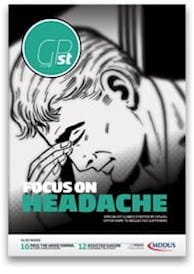THERE is a lot of learning to be done during GP training and you will be able to keep track of this by keeping learning logs and personal development plans (PDPs). Technically these form part of the workplace based assessment (WPBA), a topic we covered in the last issue of GPST. However, they are so important that they deserve to be highlighted on their own. More specific requirements for WPBAs can be found on the RCGP website.
Learning logs
Your learning will progress during the course of your training, but you need to be able to provide evidence of this to discuss with your supervisor and also with the ARCP (Annual Review of Competence Progression) panel. Therefore, a learning log will be your own personal record of evidence that your learning is progressing.
For each log entry, you can select the option to ‘share’ which means it will be made available to be read and commented on by your supervisor. Only ‘shared’ entries will contribute to the evidence that is used by your supervisor and ARCP panels when they come to assess your progress.
Here are some tips to making a successful learning log.
RCGP curriculum headings
Within your entries you must try to cover as much of the curriculum as possible. In your online learning log it can be useful to link entries to a particular curriculum heading where possible. To work smart and save time, try to include entries that cover several curriculum headings.
Evidence of 12 core competences
WPBAs (including learning logs and PDPs) are intended to assess your professional competence in 12 key areas which are derived from the core RCGP curriculum statement Being a GP. Your supervisor can only validate your log entries against this list of competences if they feel they are of satisfactory quality. Think early on about which of your competences you still need to collect evidence for and then think of ways you can achieve this. This will save you from including too many entries only focusing on a narrow range of competences, which is a common pitfall.
Reflect, reflect, reflect!
Learning is not just about accumulating lots of facts. It also involves critically thinking about our experiences, describing our feelings and thought processes and also identifying any new learning needs and thinking about how they will be met. A good reflective entry will show that you have good insight into how you are performing and also learning from your daily experiences. Try to demonstrate that you are open, honest and self-aware and describe how each experience makes you feel. See the RCGP website for a typical example of a good entry.
Quantity versus quality
The RCGP website does not state a particular number of entries that are required for a learning log. However, deaneries and local vocational training schemes usually tend to give some guidance on this. But don’t get too worked up over numbers of entries; it is much more important to focus on the quality of entries as this is what really demonstrates your learning and competence progression. Make sure you insert log entries as you go along instead of leaving them all until the last minute.
Don’t forget your trainer!
They are an invaluable resource and can often help you identify areas of the curriculum and professional competences you still need to provide more evidence for (and also tell you which ones you don’t need any more evidence for). They can also make this whole process a lot less scary, and possibly even a fun learning experience for both of you.
Personal development plans
Trainees are required to complete PDPs for a number of reasons. They help you identify and prioritise your learning and check that your actual learning is matching your priorities. They also help you recognise your own strengths and weaknesses (e.g. with multisource feedback) and allow you to build on your current abilities. They will also prepare you for the appraisal process for your lifelong career.
Dr Milan Mehta is a GP and co-author of Succeeding in the MRCGP CSA: Common scenarios and revision notes for the Clinical Skills Assessment which is part of the MediPass Series published by BPP Learning Media
Some tips for an effective PDP:
Think SMART!
Specific – make sure your goals are clear and precise.
Measurable – your goals should have a measurable outcome so you know when they have been achieved.
Attainable – goals should be realistic.
Relevant – your learning needs should be relevant to your work environment but also to your long-term career aims.
Time bound – state when you think your goals should be achieved by.
Regular reviews
Start your PDP at the beginning of your training and analyse learning needs with your supervisor ideally every three months but at least at every formal review.
Looking ahead
During your ST3 year with your final PDP, you will soon be making the transition from trainee to independent GP and your PDP should address some issues relevant to this (e.g. employment uncertainty, maintaining your knowledge and skills during gaps in service, etc).
This page was correct at the time of publication. Any guidance is intended as general guidance for members only. If you are a member and need specific advice relating to your own circumstances, please contact one of our advisers.
Read more from this issue of Insight Primary

Save this article
Save this article to a list of favourite articles which members can access in their account.
Save to library

